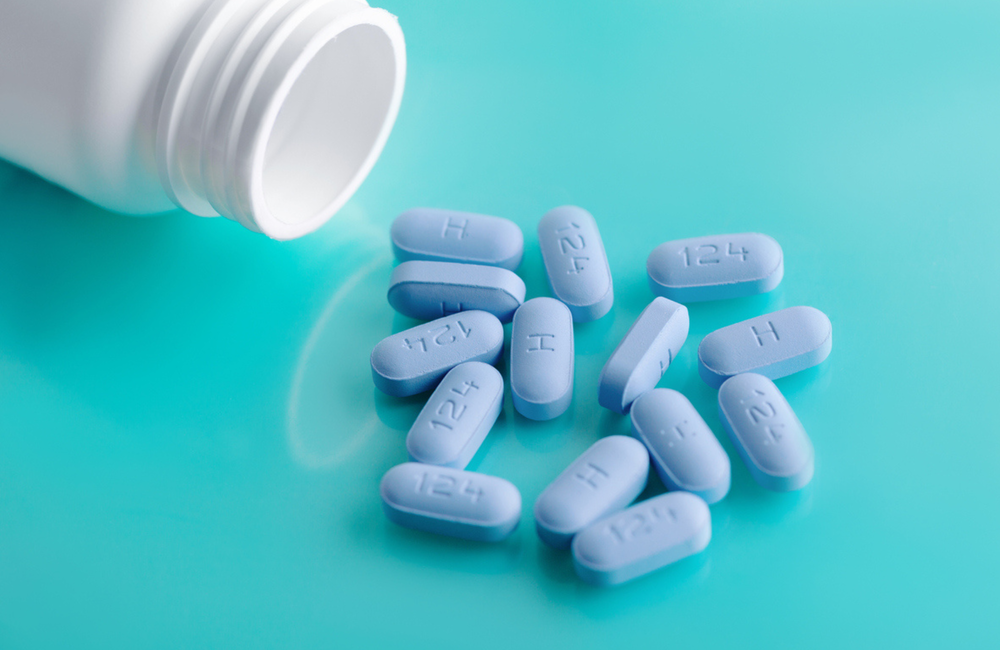
Truvada is a combination pill that contains emtricitabine and tenofovir disoproxil fumarate. It is used as pre-exposure prophylaxis (PrEP) to prevent HIV infection.
It is generally safe, but like all medication, it can have side effects in some people.
Some of these side effects are usually experienced during the first few weeks of taking the drug only. These include nausea, tiredness, gastrointestinal symptoms and headache.
Occasionally, it can affect the kidneys or bones. They usually return to normal after stopping taking PrEP.
A recent review looked at over 10,000 people who took the medication as PrEP. Their results were compared with over 7000 people who took a placebo (a dummy pill that didn’t contain PrEP).
Nausea, vomiting and other gastrointestinal problems were reported by 3.8% who took PrEP and 2.6% who took a placebo.
Kidney problems occurred in 2.4% who took PrEP and 2.0% who took a placebo.
A broken bone was reported by 1.7% who took PrEP and 1.8% who took a placebo.
The figures show that only a small number of people taking PrEP had problems. And the fact that people taking a placebo (a dummy pill) also reported problems shows that not all of them were side effects of Truvada as PrEP.
If you have a side effect from PrEP, your doctor can give you advice on how it can be managed.
More on the kidneys
A separate study looked more closely at kidney problems in PrEP users. This was based on 6808 people taking daily tenofovir disoproxil fumarate/emtricitabine as part of the scale-up of PrEP among gay and bisexual men in New South Wales, Australia.
Kidney function was assessed with a blood test that estimates the glomerular filtration rate (GFR). A higher GFR is better: above 90 is normal, between 60 and 90 indicates mild kidney disease, and below 60 is moderate or severe kidney disease. In this study, only people with a GFR above 60 could start PrEP and the researchers looked out for when GFR fell below 60 – described here as ‘kidney problems’.
Overall only 0.58% of people had kidney problems after one year on PrEP. Kidney problems were especially rare in younger people who had not had issues with their kidneys before.
People over the age of 50 had a higher rate of kidney problems (3.02%) than people under the age of 40 (0.08%). Similarly, people who had a GFR of less than 90 before starting PrEP were more likely to have kidney problems (1.97%) than people who started with a GFR above 90 (0.04%).
Some cisgender men start and stop PrEP regularly around the days they have sex – for example, at weekends. This works best for men who usually know in advance when they will have sex. This is sometimes called event-based dosing, on-demand PrEP or 2-1-1 PrEP. Research done in France has shown that taking PrEP this way has less impact on kidney function than daily PrEP, although the differences are small. The researchers concluded that PrEP has a good safety profile, whichever way you take it.
Chou R et al. Preexposure Prophylaxis for the Prevention of HIV Infection: Evidence Report and Systematic Review for the US Preventive Services Task Force. JAMA 321: 2214-2230, 2019 (open access).
doi:10.1001/jama.2019.2591
The data on side effects can be found in eFigures 4, 5, 6, 7 and 8 in the supplement to the review.
Drak D et al. Renal impairment in a large-scale HIV pre-exposure prophylaxis implementation cohort. AIDS, online ahead of print, 22 July 2021. You can read more about this study in our news report.
doi: 10.1097/QAD.0000000000003035
Liegeon G et al. Impact on renal function of daily and on-demand HIV pre-exposure prophylaxis in the ANRS-PREVENIR study. Journal of Antimicrobial Chemotherapy, 77: 3427-3435, 2022. You can read more about this study in our news report.
